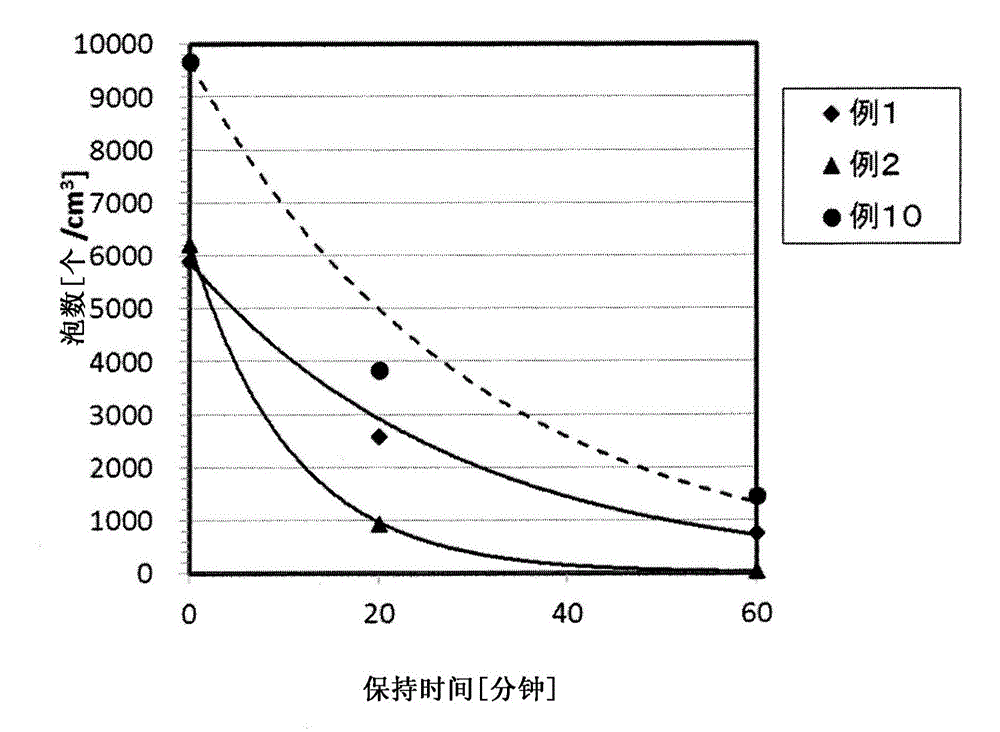Method for producing alkali-free glass
An alkali-free glass, glass technology, applied in glass production and other directions, can solve problems such as strain point reduction
- Summary
- Abstract
- Description
- Claims
- Application Information
AI Technical Summary
Problems solved by technology
Method used
Image
Examples
Embodiment
[0110] Raw materials were prepared to form glasses in Tables 1, 2, 4, and 5, and melted at a temperature of 1650° C. using a platinum crucible. At the time of melting, stirring was performed using a platinum stirrer to homogenize the glass. Next, the molten glass is poured out, shaped into a plate, and cooled slowly.
[0111] Tables 1, 2, 4, and 5 show the glass composition (unit: mass %), strain point (unit: °C) (measured by the fiber method described in JIS R3103), and glass transition of Examples 1 to 17. Temperature Tg (unit: °C), average coefficient of thermal expansion from 50 °C to 350 °C (unit: ×10 -7 / ℃), specific gravity (unit: g / cm 3 ) (measured by Archimedes method), Young's modulus (unit: GPa) (measured by ultrasonic method), specific modulus (unit: GPa·cm 3 / g), the temperature T that becomes the reference value of solubility as the high-temperature viscosity value 2 (glass viscosity η becomes 10 2 Poise temperature, unit: °C), and temperature T which become...
PUM
| Property | Measurement | Unit |
|---|---|---|
| strain point | aaaaa | aaaaa |
| particle diameter | aaaaa | aaaaa |
| particle diameter | aaaaa | aaaaa |
Abstract
Description
Claims
Application Information
 Login to View More
Login to View More - R&D
- Intellectual Property
- Life Sciences
- Materials
- Tech Scout
- Unparalleled Data Quality
- Higher Quality Content
- 60% Fewer Hallucinations
Browse by: Latest US Patents, China's latest patents, Technical Efficacy Thesaurus, Application Domain, Technology Topic, Popular Technical Reports.
© 2025 PatSnap. All rights reserved.Legal|Privacy policy|Modern Slavery Act Transparency Statement|Sitemap|About US| Contact US: help@patsnap.com



